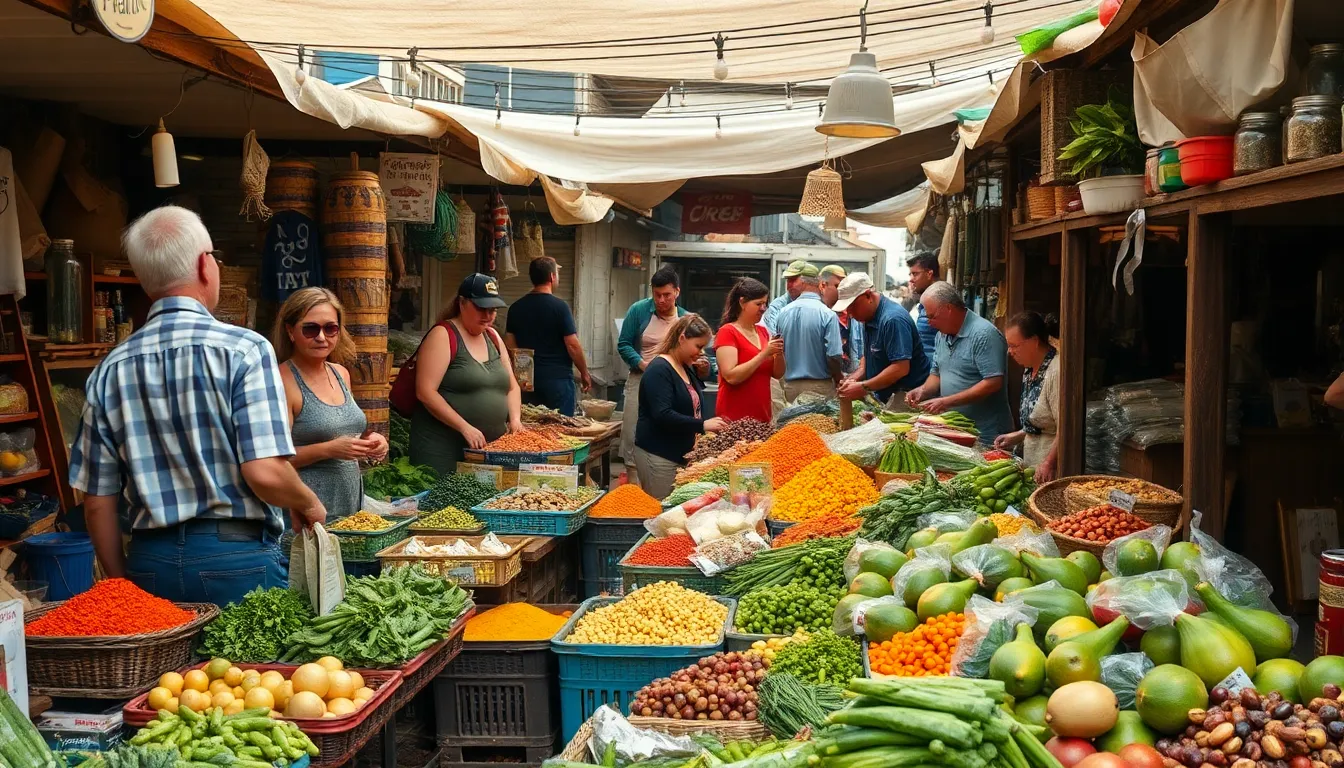
In the world of culinary delights, few things spark intrigue like the elusive sadatoaf ingredients. These magical components can turn an ordinary dish into a culinary masterpiece, but finding them can feel like searching for a needle in a haystack—blindfolded. Fear not, aspiring chefs! With a sprinkle of creativity and a dash of resourcefulness, tracking down these treasures can be both fun and rewarding.
How To Find Sadatoaf Ingredients
Sadatoaf ingredients serve as the backbone of various culinary creations. These components introduce distinct flavors and textures, enhancing any dish significantly. Chefs often seek these unique elements for their ability to transform a standard recipe into an unforgettable dining experience.
Identifying sadatoaf ingredients begins with thorough research. Exploring local markets provides insights into what’s available and seasonal. Engaging with local producers fosters connections and opens opportunities to acquire rare items. Networking with fellow chefs or joining culinary groups can also yield valuable recommendations.
Ethnic groceries often carry ingredients not found in conventional supermarkets. Exploring these shops often leads to discovering unique spices and flavorings that exemplify sadatoaf elements. Additionally, online ingredients stores specialize in hard-to-find items. Ordering through reputable sellers ensures quality and authenticity.
Farmers’ markets merit consideration, as local growers offer a variety of fresh produce. Meeting farmers can provide knowledge about cultivating methods and seasonal availability of sadatoaf ingredients.
Utilizing social media platforms like Instagram or Pinterest can inspire ingredient choices. Visually appealing posts highlight different ways to use sadatoaf components. Following culinary influencers expands both knowledge and options.
Experimentation is key in the journey to find sadatoaf ingredients. Combining unexpected elements may yield delightful surprises. Adjusting traditional recipes to include these ingredients creates a fusion of flavors, representing personal creativity in cooking.
The quest for sadatoaf ingredients encourages exploration and innovation in every culinary adventure.
Where to Look for Ingredients

Finding sadatoaf ingredients requires exploring various sources that offer unique items. Savvy chefs know the right locations to seek these ingredients.
Local Markets
Local markets often feature a diverse selection of fresh produce and specialty foods. Farmers and vendors present unique products that aren’t available in standard grocery stores. Engaging directly with sellers provides insight into seasonal offerings and sourcing practices. Chefs can also discover regional specialties or artisanal goods at these markets. Visiting multiple locations increases the chances of locating rare ingredients. Networking with sellers enhances knowledge and possible recommendations for lesser-known items.
Online Stores
Online stores provide convenient access to diverse ingredients from around the world. Specialty retailers offer hard-to-find spices and unique flavorings. Utilizing well-reviewed e-commerce platforms ensures product quality and availability. Searching for specific sadatoaf ingredients typically yields multiple options to explore. Retailers often include detailed descriptions and customer reviews that aid in decision-making. Subscribing to specialty ingredient sites can also provide exclusive deals and new product alerts. These online resources broaden the culinary inventory, allowing chefs to experiment with various flavors and textures.
Identifying Quality Ingredients
Finding quality sadatoaf ingredients requires attention to detail and a commitment to freshness. Chefs benefit from knowing how to select the best items for their culinary creations.
Tips for Choosing Fresh Produce
Selecting fresh produce starts with visual inspection. Look for vibrant colors and firm textures, which indicate optimal ripeness. Smelling fruits and vegetables also reveals freshness; a strong aroma often signifies flavor. Additionally, seasonality plays a crucial role; local, in-season produce tends to be tastier and more nutritious. Asking growers at farmers’ markets can provide insight into the best ingredients available. Prioritize items with minimal damage to ensure quality, and remain flexible to try new, unique varieties as they become available.
Reading Labels Effectively
Reading ingredient labels helps identify quality sadatoaf choices. Start by examining the ingredient list for recognizable items; avoid those with excessive additives or preservatives. Look for certifications like organic or non-GMO, indicating higher quality standards. Pay attention to the expiration date because freshness impacts flavor and effectiveness. Comparisons between brands can reveal which ones prioritize quality; trusted sources often recommend well-reviewed options. Being informed about sourcing practices can also guide decisions, highlighting products from reputable growers and producers.
Alternative Sources
Exploring alternative sources for sadatoaf ingredients can lead to exciting culinary discoveries. These venues often provide unique, fresh options that enhance flavor profiles.
Community Gardens
Community gardens represent a fantastic opportunity for chefs to find unique ingredients. Many gardeners grow rare herbs and vegetables not found in local stores. Engaging with community members can also lead to sharing tips on growing and preparing these ingredients. The seasonal nature of these gardens encourages experimentation with fresh produce. Visiting regularly provides insight into what’s available throughout the year. Connecting with local gardeners fosters a sense of community while enriching one’s culinary repertoire.
Food Co-ops
Food co-ops offer a treasure trove of specialty items and local produce. Members often benefit from access to seasonal and organic ingredients. Choosing to shop at co-ops supports local farmers and promotes sustainable practices. These cooperatives frequently feature products from nearby artisans, enhancing the selection of unique flavors. Understanding the cooperative model allows chefs to enhance their ingredient sourcing while networking with like-minded individuals. Engaging with staff also provides knowledge about ingredient origins and best uses.
Finding sadatoaf ingredients can be an exciting journey for any chef. By exploring local markets and engaging with producers, they can uncover unique flavors that elevate their dishes. Online resources and ethnic groceries further expand their options, making it easier to access hard-to-find items.
Quality plays a crucial role in this search. Chefs should focus on freshness and seasonality while remaining informed about sourcing practices. Alternative avenues like community gardens and food co-ops not only provide unique ingredients but also foster connections within the culinary community. Embracing these diverse sources encourages creativity and innovation in the kitchen, leading to unforgettable culinary experiences.


